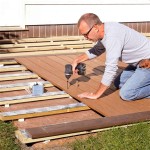How To Fix Plastic Wicker Patio Furniture Cushions
Plastic wicker patio furniture offers a blend of durability, weather resistance, and aesthetic appeal, making it a popular choice for outdoor spaces. The cushions that accompany this furniture, however, are often subject to wear and tear, discoloration, and damage from the elements. Repairing these cushions can extend the life of your patio furniture, saving you money and reducing waste. This article provides a comprehensive guide to fixing common issues affecting plastic wicker patio furniture cushions.
Addressing Common Cushion Problems
Before embarking on any repair, it is crucial to identify the specific issues affecting the cushions. Common problems include faded fabric, stains, tears, water damage, and compressed or misshapen padding. Understanding the nature of the damage will dictate the appropriate repair methods and materials required.
Faded fabric is a frequent issue, especially with cushions exposed to prolonged sunlight. UV rays break down the dyes in the fabric, leading to a dull or washed-out appearance. Stains can arise from spills, dirt, and outdoor debris. Tears can occur due to sharp objects, excessive weight, or general wear and tear. Water damage can lead to mold and mildew growth, weakening the fabric and causing unpleasant odors. Compressed or misshapen padding results from prolonged use, diminishing the cushion's comfort and support.
A thorough inspection of each cushion is the first step. Examine the fabric for tears, stains, and fading. Check the seams for any signs of separation or weakness. Assess the padding for compression or uneven distribution. Note any areas affected by water damage or mold. This detailed assessment will inform the repair strategy and ensure that all issues are addressed effectively.
Repairing Faded Fabric
Reviving faded fabric can significantly improve the appearance of plastic wicker patio furniture cushions. Several methods can be employed, depending on the severity of the fading and the type of fabric.
For mild fading, washing the cushions with a color-safe detergent can restore some vibrancy. Use a gentle cycle and cold water to prevent further damage to the fabric. Adding a color booster to the wash can also enhance the results. After washing, allow the cushions to air dry completely in a shaded area. Direct sunlight can exacerbate fading.
If washing does not sufficiently restore the color, fabric dye can be used. Choose a dye that is specifically designed for outdoor fabrics and matches the original color of the cushions as closely as possible. Follow the manufacturer's instructions carefully, paying attention to fabric preparation and dyeing techniques. It is advisable to test the dye on a small, inconspicuous area of the cushion first to ensure that the color is accurate and the fabric reacts favorably.
Fabric paint is another option for addressing faded fabric. This method is particularly effective for patterned fabrics or when a precise color match is difficult to achieve with dye. Use a high-quality outdoor fabric paint that is resistant to fading and water damage. Apply the paint in thin, even layers, allowing each layer to dry completely before applying the next. Fabric paint can also be used to create custom designs or patterns on the cushions.
Protective sprays designed for outdoor fabrics can help prevent future fading. These sprays contain UV inhibitors that protect the fabric from the damaging effects of sunlight. Apply the spray according to the manufacturer's instructions, ensuring that all surfaces of the cushions are evenly coated. Reapply the spray periodically, especially after washing the cushions.
Addressing Stains and Water Damage
Stains and water damage can compromise the appearance and structural integrity of plastic wicker patio furniture cushions. Prompt and appropriate cleaning is essential to minimize the damage and prevent long-term problems.
For fresh spills, blot the affected area immediately with a clean, absorbent cloth. Avoid rubbing the spill, as this can spread the stain and work it deeper into the fabric. For stubborn stains, use a mild detergent and warm water. Apply the solution to the stain and gently scrub with a soft brush or cloth. Rinse the area thoroughly with clean water and allow it to air dry completely.
For oil-based stains, such as sunscreen or cooking oil, a solvent-based cleaner may be necessary. Test the cleaner on a small, inconspicuous area of the cushion first to ensure that it does not damage the fabric. Apply the cleaner to the stain and follow the manufacturer's instructions carefully. Rinse the area thoroughly with clean water and allow it to air dry completely.
Mold and mildew growth is a common problem in humid environments. To remove mold and mildew, mix a solution of one part bleach and ten parts water. Apply the solution to the affected area and scrub gently with a soft brush. Rinse the area thoroughly with clean water and allow it to air dry completely in the sun. The sun's UV rays will help to kill any remaining mold spores.
To prevent future water damage, consider using waterproof cushion covers. These covers provide a barrier against moisture and protect the cushions from rain, spills, and humidity. Choose covers that are breathable to prevent condensation from forming inside. Store the cushions indoors or in a covered area during periods of heavy rain or prolonged periods of non-use.
Repairing Tears and Replacing Padding
Tears and compressed padding can significantly reduce the comfort and functionality of plastic wicker patio furniture cushions. Repairing tears and replacing padding can restore the cushions to their original condition.
Small tears can often be repaired with fabric glue or needle and thread. For fabric glue, apply a thin layer of glue to the edges of the tear and press them together. Hold the edges in place until the glue has dried completely. For needle and thread, use a heavy-duty thread that matches the color of the fabric. Sew the edges of the tear together using a tight, even stitch. Reinforce the repair with a second row of stitches for added durability.
Larger tears may require the use of a patch. Cut a piece of fabric that is slightly larger than the tear. Place the patch over the tear and pin it in place. Sew the patch to the cushion using a tight, even stitch. For a more professional look, consider using a sewing machine. Alternatively, a fabric adhesive patch can be used; these are ironed onto the fabric for a quick and easy fix. Select a patch material that matches the color and texture of the original cushion fabric for the best result.
Compressed padding can be replaced with new foam or batting. Carefully remove the cushion cover, taking note of how it is constructed. Remove the old padding and discard it. Measure the dimensions of the cushion and cut the new padding to the appropriate size. Insert the new padding into the cushion cover and smooth it out evenly. Reattach the cushion cover, ensuring that it is securely fastened.
When selecting new padding, consider the density and thickness of the foam or batting. High-density foam provides better support and durability, while batting offers a softer, more comfortable feel. Choose a padding material that is appropriate for the intended use of the cushions. Purchasing padding specifically designed for outdoor furniture will ensure that it is resistant to mold and mildew.
Furthermore, consider adding a layer of moisture-resistant fabric between the foam and the outer cushion cover. This will help to protect the foam from water damage and prolong its lifespan. This layer can be made from a thin plastic sheeting or a specialized waterproof fabric liner.
Regular maintenance is key to preventing future damage and extending the life of plastic wicker patio furniture cushions. Clean the cushions regularly with a mild detergent and water. Store the cushions indoors or in a covered area during periods of inclement weather. Address any issues promptly to prevent them from escalating into more significant problems.

Wicker Furniture Repair Guide Jessica Welling Interiors

How To Repair Your Resin Wicker Outdoor Furniture Doityourself Com

How To Repair Scratches On Synthetic Rattan Garden Furniture Hayes World

How To Spray Paint Outdoor Resin Wicker Furniture Porch Daydreamer

Diy Outdoor Cushions A Erfly House

Sew Easy Outdoor Cushion Covers Confessions Of A Serial Do It Yourselfer

Furniture Wicker Repair Kit 105ft High Strength Supplies Stuffygreenus Flat Rattan Material For Patio Chair Sofa Table Replacement 8mm Width Brown Com

How To Clean Outdoor Cushions And Remove Stains Bob Vila

The Guide To Washing Your Outdoor Garden Cushions Lakeland Furniture Blog

Costway Brown 5 Piece Plastic Wicker Metal Outdoor Chaise Lounge With Turquoise Cushions Hw67697tu The Home
See Also








